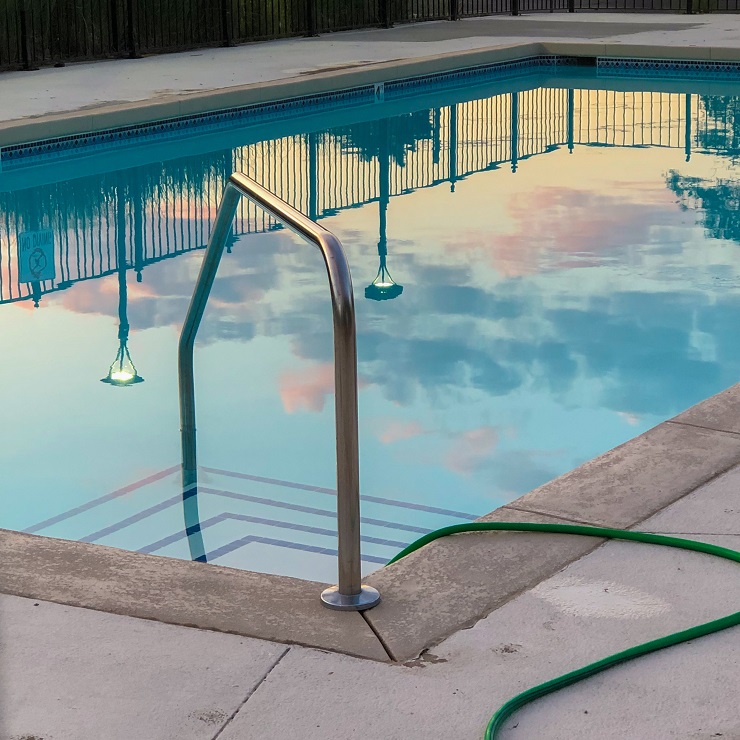Swimming pools are never a “set it and forget it” proposition. Swimming pools — while so much fun — are a LOT of work. Not only are they work, but they are also consistent work. You can’t think, “oh I’ll get to it tomorrow… or the next day or the next…” by the time you do that you are going to be faced with an algae-filled swimming pool and that is a mess and can cost a lot in time and money to get back to swimmable again.
Your family pool encourages outdoor gatherings, fun, exercise disguised as fun and a party hot spot. The pool is the best place to spend hot summer days and humid nights and not have to fight crowds to carve out a tiny piece of beach, surrounded by strangers. BUT as cool as a pool is, they bring challenges and require maintenance.
Tips For A Trouble-Free Swimming Pool
Be aware of these quirks and keep up with these pool maintenance tasks for a pool that is always ready for you when you’re ready to swim!
- Clean up the debris. It might be easier to let the pool filter and skimmer pull in debris, but it’s better for the pool water and equipment if you are diligent about cleaning up debris floating in the water and debris blowing around the pool. If you have flowering trees or plants or trees that drip sap or draw in birds, you will have more cleanup. Also, keep debris like leaves and grass clippings and trash away from the pool equipment so there is unfettered airflow.
- There should be no “PEE” in your pool! Check the water for chemicals like trichloramine and cyanogen chloride levels because these show up in a water chemical test when the swimmers are using the pool as a bathroom. Gross, right!? Test the water chemistry and while you don’t have to point fingers you should institute a rule that you use the bathroom before you get in the water and you use it regularly — and not in the pool! You can use the “threat” that the water will turn green if someone pees in it! It was an old wive’s tale but might have put the fear of not peeing in the pool in the hearts of many a young swimmer.
- Take a stroll around the pool and look for any standing water. If it’s not raining and no one has been splashing water out, there could be a slow leak. Here is a quick way to check before you call your pool contractor. Take a bucket drop a brick in it, and place it on a step inside the pool such that the water level in the bucket is exactly the same as the water level in the pool. Wait for a few days. If there is a significant difference in levels, you have a leak. Do note that checking for leaks is not the same as finding the leak. Once you find out that there is a leak, you need to find where the leak is and get it fixed. A leaky pool is a serious hazard to your home as well as your pocket.
- Clean the filter and skimmer baskets regularly and skim off any floating debris. The filter is one of the most important parts of the pool they work constantly to keep the water clean from small debris and it is what maintains that clear sparkly looking pool the way it is. If it wasn’t for the filter, your pool will get murky real quick. Clean the filter and skimmer it at least once a week. It will have a lot of mud, sand, leaves, small toys and even little dead insects. Once a month, backwash the pipes that take in the water before cleaning.
- Balance water chemistry regularly (daily in some cases). Test the:
- Cyanuric acid
- free chlorine
- pH levels
- Alkalinity, and
- Calcium
You can either get a home kit to check them yourself or get a professional to do it for you.

